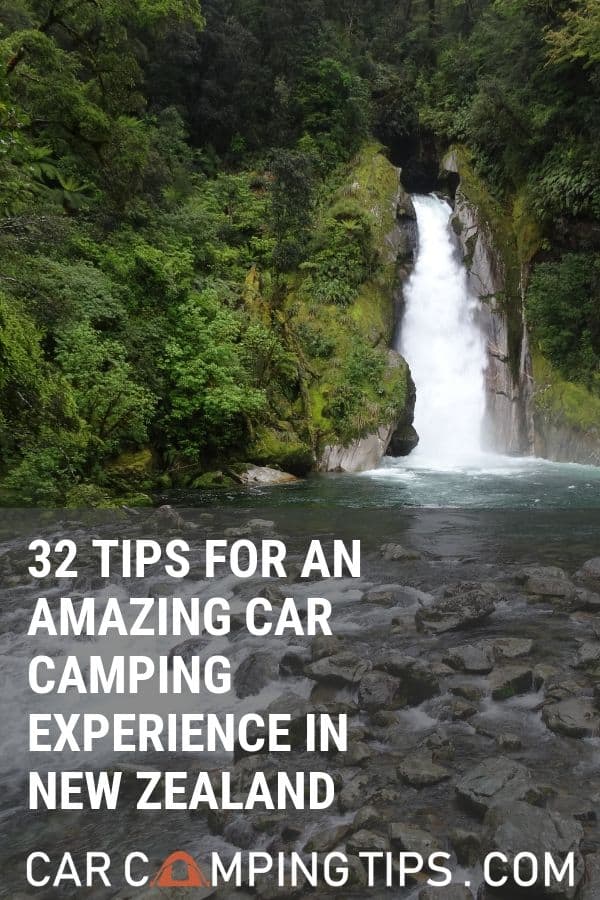I can’t describe how much I loved my experiences while car camping in New Zealand. New Zealand is beautiful, wild, untouched, and full of secrets. I have had the amazing privilege of being able to go on one trip to the South Island for 3 weeks solo, and another trip to the North Island with my wife a few years later. Even after 5 weeks total of traipsing all over the country, I still feel like there’s so much to see and experience.
Solo camping is a much different experience. For tips on making a solo camping trip a great experience, see my post here for details.
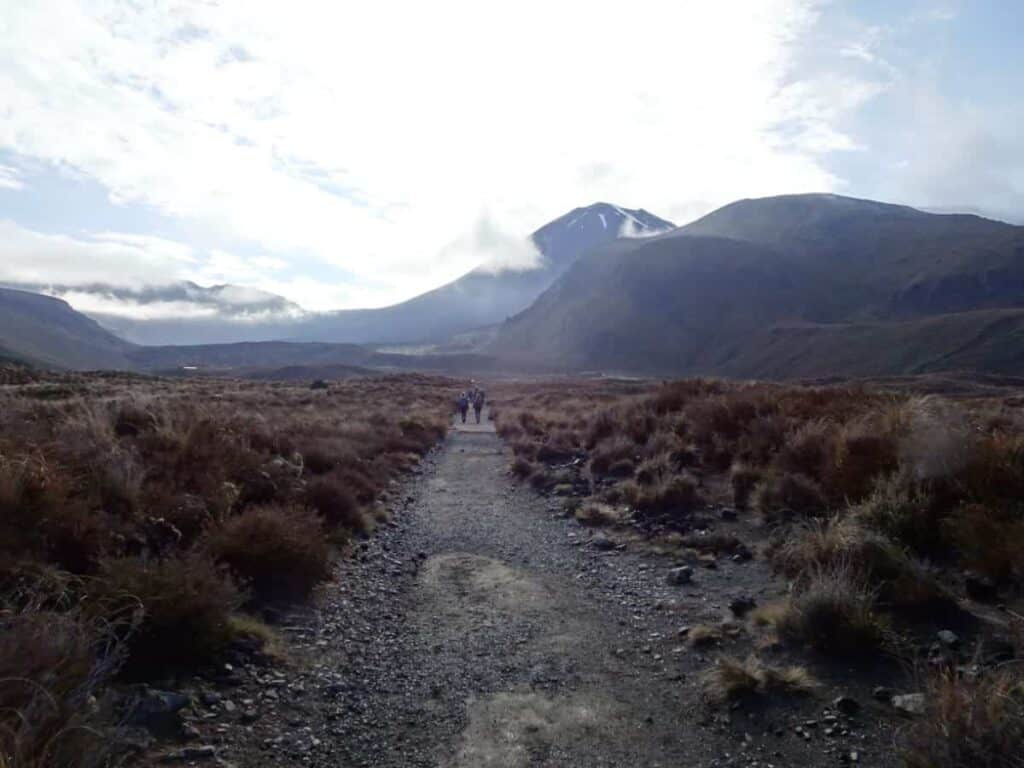
In this post, I’m going to cover 32 tips of what I learned on my two trips to New Zealand. These tips will save you money, save you time, and help you enjoy New Zealand to the fullest.
By the way, as an Amazon Associate, I earn when buying qualified products through links on my site.
- 1. Save Loads Of Money Renting a Used Car
- 2. Buy The Rental Insurance
- 3. New Zealand’s Roads Are Gorgeous, and Deadly
- 4. Spend Time Learning The Driving Rules
- 5. No Refrigeration Foods
- 6. Take a Great Walk (and Buy Tickets Early)
- 7. Give Yourself Permission To Splurge On a Bungee
- 8. Make an Awesome Route Plan with Lots of Contingencies
- 9. Mix Up the Lodging: Rent an AirBnB At Least Once
- 10. Visit in November (New Zealand in Spring)
- 11. Make Sure You Try The Chocolate
- 12. Use The Best Travel Guidebook For Your Style
- 13. Don’t Miss My Favorite NZ North Island Destinations
- 14. Don’t Miss My Favorite NZ South Island Destinations
- 15. Don’t Try and See Both Sides of the Ditch (NZ and Australia) in One Trip
- 16. Sterilize Your Camping Gear (Including Shoes!) Before Flying
- 17. Eat Fish and Chips With Aioli Sauce
- 18. Fill Up On Petrol (Gas) At Every Opportunity
- 19. Set Your Credit Card Up With a Pin
- 20. Buy a Vodafone Sim Card
- 21. Bring Really Good Rain Gear
- 22. Be Prepared For Cold
- 23. Invest In a Superzoom Camera
- 24. Bring Your Swimsuit for the Best Dips You’ll Ever Take
- 25. Use the Rankers Camping NZ App
- 26. Carry Cash For Campsites
- 27. Don’t Underestimate Sandflies
- 28. Be Careful About Freedom Camping
- 29. Know Your Campsite Type Before You Go
- 30. Sign Up For AirNZ Deals
- 31. Dates Are Flipped
- 32. Prepare Your Phone To Be Offline
1. Save Loads Of Money Renting a Used Car
The most expensive parts of your trip to New Zealand are flights, transportation, and lodging.
One of the biggest ways you can save money on transportation is to rent a used car rather than a new car.
I talk about this in depth on my YouTube channel here:
This holds true for renting campervans as well.
Pro Tip: Rent From a Smaller Rental Company
When in New Zealand, it is most convenient to rent from the biggest rental car companies that usually are attached to the airports. However, you can save a HUGE amount of money if you go with a smaller rental company.
For example, I just got a quote from renting from Hertz, an international, well known car rental company, as well as from Omega, a smaller rental car company from Nov 25, to Dec 9, starting from Wellington, and dropping off in Auckland on the North Island.
| Rental Car Company | Base Cost | Extra Insurance Cost | Total (USD) |
| Hertz | 812.27 | 369.54 | 1,181.81 |
| Omega | 269.26 | 166.29 | 435.55 |
These smaller rental companies want your business, and so they typically have shuttle services that will take you to and from the airport so you don’t have to rent a rideshare.
We used Omega Rental Cars the last time we went to New Zealand, and it was not a sparkly new car, but it was a decent sedan that worked well for us. There were no hidden fees. We did buy their insurance upgrade, but we didn’t get a chance to use it (yay!), so we can’t speak to how good it is. We would definitely rent from them in the future.
If Omega is not in the area you are trying to rent from, do a little more research and find local car rental companies in the area and find one that has locations where you will be arriving and departing.
Is a Used Car Safe To Use?
A used car in New Zealand is not too far from your used car that you’re driving right now. It’s going to have quirks, but it gets the job done.It’s important to get a phone service while you are in NZ in case of emergencies and you get stranded.
Rent a Car/Van For Free
If your travel plans are flexible–rental car companies are looking for drivers to transport their cars from one office to another. If your travel plans can be adjusted to coincide with this transfer, you can have a car rental for free, or very cheap. TransferCar.co.nz is an example of a website that organizes this, but many rental car websites have a section for needed transfers.
Campervans vs. Rental Cars
Campervans are essentially vans that have been purposed for travel and include cots and a kitchenette. The bigger campervans include portable toilets for additional independence. Bigger campervans are called self-sustained, which is important if you are looking for free campsites, because many require your campervan to be “self-sustaining” because there are no toilet options at the campsite.
Campervans are MUCH more expensive to rent than renting a car–which makes sense, because you are paying for extra lodging. Remember though that you will still have to pay for a place to park your campervan, so renting a campervan is definitely an additional expense.
Campervans have advantages and disadvantages other than cost. One advantage is that some camping locations have zero amenities and are geared towards self-sustained campervans that have built-in toilets. In other words, there is no way to camp at some campsites unless you have a self-sustained campervan.
The opposite is true, though. Some campsites actually prohibit campervans, or have no amenities specific to campervans (meaning no dump stations, etc).
Additionally, if you are planning on staying in hostels, airBnbs, or hotels for part of your journey, you are paying for the premium of your campervan–so a campervan rental makes sense if you are planning on almost exclusively camping.
In summary, know that with campervans you are opening some doors, and closing some others. Many people LOVE the experience, so it’s something to think about.
We rented a car for both of our trips to New Zealand, and this worked well for us–especially since we did a combination of hostels, campsites, and airBnBs.
2. Buy The Rental Insurance
Unfortunately life has to teach you things through experience, sometimes. I got into an accident (my own fault… also not New Zealand’s flipped roads’ fault. Just my own) on my first trip to New Zealand, and I learned all about New Zealand’s rental insurance systems.
Credit Card Travel Insurance Doesn’t Apply
Some credit cards (less and less these days) offer basic travel insurance, including rental car insurance, in case of any incidents. However, if you read the fine print, most of these are not applicable in New Zealand. New Zealand has its own laws and policies and therefore your basic credit card rental insurance is likely not to work at all.
Basic Insurance Excess
I’m not sure this is due to laws in the New Zealand, but all rental companies we’ve looked into seem to follow this same pattern. Every rental includes a very basic insurance policy. There’s a high maximum you’ll have to pay in case you have an accident, even if you don’t buy additional rental insurance. They call this number Insurance Excess. In America, we’d call it a deductible.
For example, for Omega rental cars, the Basic “Bronze” insurance excess is $2500 NZD. If you pay no money for additional insurance, then the max out of pocket expense you’ll have to pay is $2500 NZD (1649.05 USD).
Peace Of Mind
Depending on where you’re from, you’re likely to be driving on the opposite side of the road in New Zealand than you’re used to. This isn’t as terrifying as it may seem. If you are careful, you can adjust quickly to the road system. However, I admit it’s kind of stressful. To me, it was worth the peace of mind for our second trip to have rental insurance, especially because of my previous car accident a few years earlier.
I’d highly recommend spending the extra money on the rental insurance if you are new to New Zealand roads.
Caveats
Remember that your rental car company may have policies that prohibit you from driving on “unsealed” (unpaved) roads, or from driving off-road. You may forfeit any insurance coverage you have if you violate their policies and get in an accident. Not all NZ rental companies care if you drive on dirt roads if you’re careful, though, so it’s worth asking.
3. New Zealand’s Roads Are Gorgeous, and Deadly
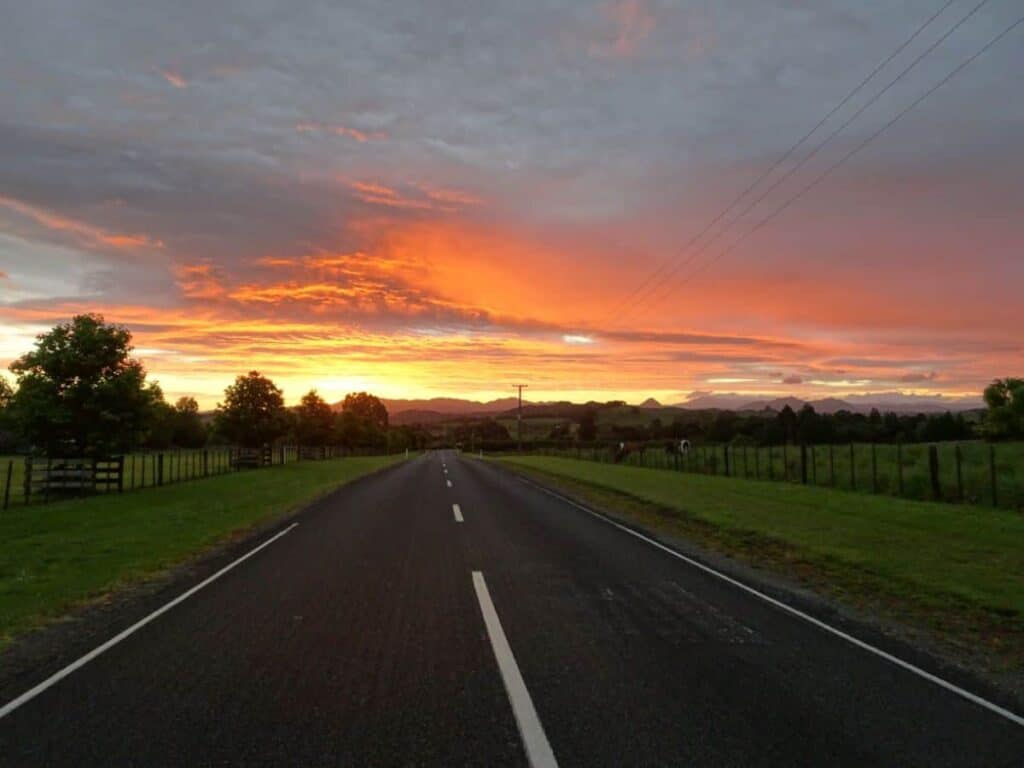
New Zealand roads are actually in great condition. Additionally, most places you want to get to have paved (in New Zealand, they call these sealed) roads.
There are some more treacherous drives through the mountain passes such as through Arthur’s Pass. Other drives are full of hairpin turns that require your full attention.
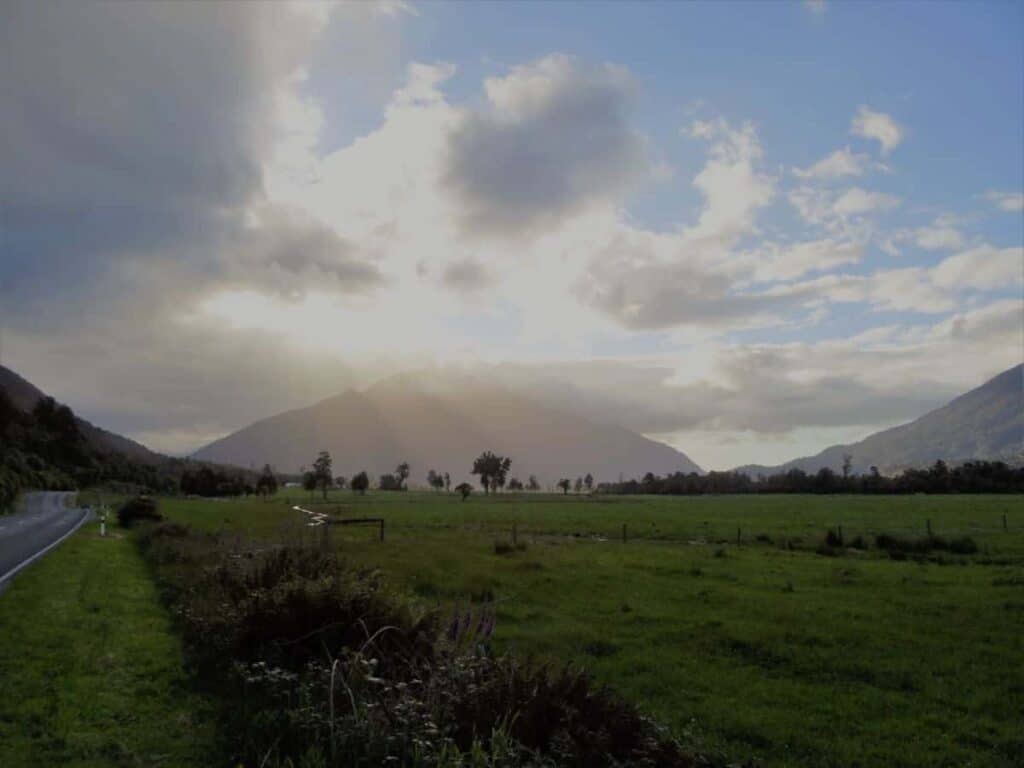
The most dangerous part about New Zealand Roads are that they are so beautiful that they can be very distracting. When you see an amazing view, make sure to pull off, safely. You’ll see vistas from the road that you won’t believe.
4. Spend Time Learning The Driving Rules
On Air New Zealand flights, you’ll notice that as part of the in-flight movie list they have several videos showing you the driving rules. I recommend watching them as you are a captive audience in that airplane, and it’s good to familiarize yourself with the New Zealand road rules. Here are an example of a couple that are worth remembering:
No Right (Left) Turn On Red
In America, we have a driving rule that allows for turning right on a red light if the way is clear.
In New Zealand, the roads are flipped, so the equivalent would be turning left at a red light. However, turning left at red lights is not allowed in New Zealand.
I thought this rule would bother me, but it actually is kind of nice to not have to stress about judging the distance and speed of an approaching car. It’s a lot safer this way and I remember feeling like we should do it in America. Thankfully, also, many of the intersections are roundabouts so this isn’t an issue usually.
No Tolerance For Speeding
People still speed in New Zealand, but it’s not like many parts of America where there’s a collective understanding that the speed limit actually means 5 MPH over the speed limit (also… NZ uses kilometers instead of miles). When the speed limit is 100 KPH (about 60 MPH), then this means it’s 100 maximum–not one kilometer over. This is more enforced in residential areas.
Get Used To Roundabouts
I’d recommend watching some Youtube videos about navigating through roundabouts. This is the hardest thing to get used to, especially multi-lane roundabouts with traffic lights. Here’s an example of a decent one:
5. No Refrigeration Foods
When I first went to New Zealand, I rented a car in Invercargill (the very bottom of the South Island), and drove all the way to Nelson over the course of 11 days. I camped for most of these days, and because I wasn’t always very near to a supermarket, I stocked up in towns with foods that didn’t need to be refrigerated.
This is before I met my wife, mind you, and I’m sure she would have been appalled to eat the way I did. However, in any case, regardless of the quality of food you eat, it’s a good idea to use food that doesn’t need to be refrigerated, such as:
- Tub of Margarine (Okay okay… not super healthy, but really nice because it doesn’t need to be refrigerated)
- Rolls
- Canned food (chili, meat, etc)
- Mi Goreng
- Vegetables
I realize that I need to rant a little about Mi Goreng. It’s similar to the Ramen noodle experience, but I need to mention it because Mi Goreng noodles are delicious. Mi Goreng can occasionally be found in stores in America, but it’s much more prevalent in New Zealand. It’s not made as a soup, but rather as dry noodles.
My sister-in-law is from New Zealand and lives in America and she often gets requests to take back Mi Goreng from New Zealand when she visits. Yeah, they’re that good! You can always order Mi Goreng online, though.
6. Take a Great Walk (and Buy Tickets Early)
New Zealand’s Department of Conservation (known as the DoC), has an amazing system of trails all over the two islands. There are 10 (as of this writing) “Great Walks” that are exceptional in their beauty.

New Zealand’s Great Walks are premier tracks that pass through diverse and spectacular scenery. From native forests, lakes and rivers to rugged mountain peaks, deep gorges and vast valleys…there’s a Great Walk for everyone!
DoC’s Website
Tips for Going on Great Walks
I’ve had the opportunity to go on 2 of the Great Walks. The Great Walks vary in length–the Milford Track, for example, includes 3 nights of staying in cabins along the track. I wouldn’t say these are for advanced hikers only, but they still can be very strenuous so I wouldn’t attempt it if you are unsure of your own hiking abilities.
- Be Extra Prepared For Rain. If you are on a multi-day hike, you are probably going to get soaked no matter what. Hiking in the rain will make you sweat inside and out of your rain jackets and so you’ll be pretty damp by the end of the day. Still, it helps to have a poncho for your pack to keep your stuff dry, and it helps to not be sopping wet.
- Take a good look at the DoC’s recommended gear for each walk. The DoC has a lot of experience with many different hikers and so they have a pretty good idea of what to bring.
- Bring a good camera. You may not see views like this again in your life.
- Book Early. Some of the great walks (particularly the Milford Track) are so popular that you must reserve them as far out as possible. The season is from October to April (New Zealand’s warmer season), and the booking system allows you to reserve starting in June of that same year. Many people don’t realize you can’t arrive to New Zealand and go on any Great Walk you want–you must reserve well in advance.
- Make Sure To Book Your Transport. I highly recommend not driving to the track locations–often they are very remote and you are hiking one way, so getting back to your car is a little tricky. It’s easiest to take the shuttles. If you reserve cabins for a great walk, remember that you have to book the shuttles as well as they are not included
The Great Walks can be pretty expensive–especially since they’ve doubled the prices for international visitors, recently. Thinking of my memories of the journey, though, to me it was worth all the money I spent.
There are much cheaper alternatives, and there are plenty of hacks to be able to see some of the same sights without staying in the same cabins (which are the primary costs for these hikes). So don’t feel that if the price is prohibitive for you that you have to go, because if you have a good guidebook, you can find amazing unofficial walks without spending any additional money at all.
Delay Your Rental Car Reservation
To save a bit of money, it helps to delay your car reservation for as long as possible. I landed in Queenstown on the South Island–spent some time there, and then went on a Great Walk for 4 days. Since I didn’t need my car for the great walk, I started my rental afterwards. Plan your trip so that your walks are at the beginning of the trip so you can pull off this easy money saver.
7. Give Yourself Permission To Splurge On a Bungee
I mention this, because I spent time in Queenstown and I didn’t go for the bungee. Commercial bungee jumping was invented in New Zealand. But I didn’t go. It’s true that there’s many cheaper places to go bungee jumping in the world. And it’s true that Queenstown is kind of touristy and so the prices are high anyway. And it’s true that there are higher places to bungee jump in the world.
And I still wish I’d done it anyway. If you’re up for thrills, I recommend budgeting for a bungee jump. 🙂
8. Make an Awesome Route Plan with Lots of Contingencies
Cool! You’ve booked a flight to New Zealand and you’ll be staying for 14 days. What to do?
I recommend picking a starting place for your adventures, and an ending place. Rental Car companies are very used to one-way trips in New Zealand so I highly recommend making your flights and car rental coincide with a one-way trip.
Make a route and use a mapping tool (such as Google’s free MyMaps) to keep track of desirable locations, as well as your route.
Since there are thousands of places to explore, try and categorize your locations into:
- Would Like to See
- Would Love to See
- Would Rather Die Than Not Seeing
Put pins on your map for each of these locations. Keeping these categorized will help you prioritize. Your plans will often change depending on how you feel or your circumstances so it helps to have backup plans.
Here’s an example of the map we made for our North Island trip:
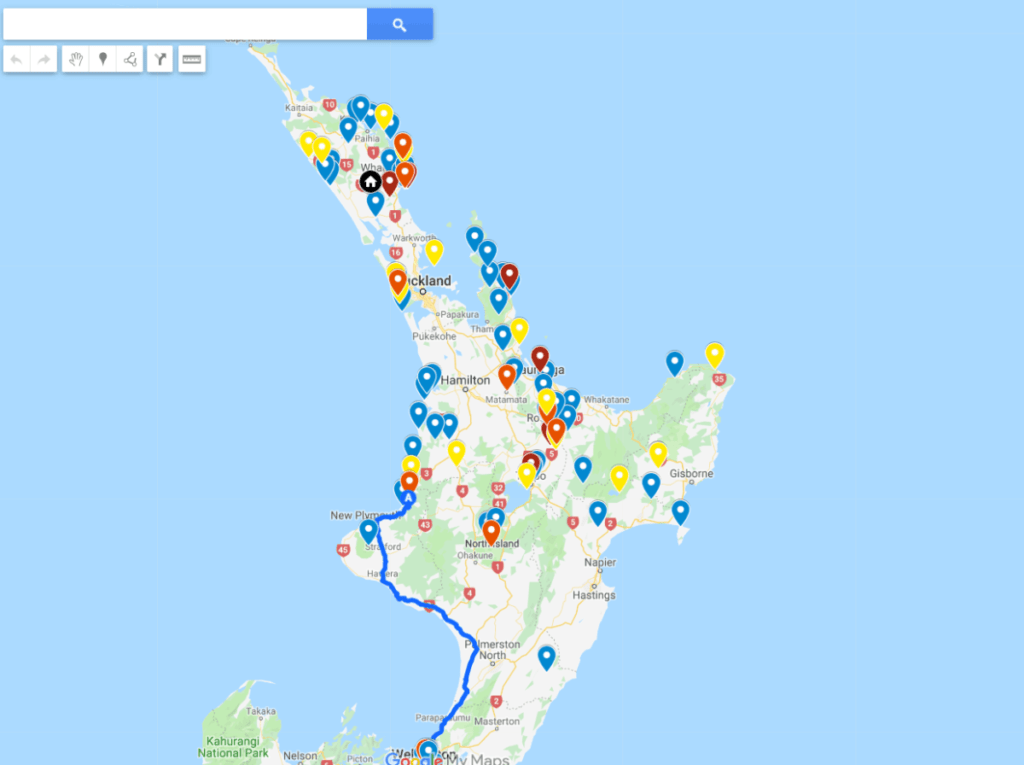
How do you know which places to visit? TripAdvisor will only take you to where everyone else is going, and that only goes so far. So, I highly recommend using a guidebook.
9. Mix Up the Lodging: Rent an AirBnB At Least Once
Car Camping is an amazing way to be close to the landscape of New Zealand. You wake up, pack up, and you’re already where you want to be! Although many of the campsites have laundry and coin-op showers, it’s still really nice to break up your stay in New Zealand by reserving a couple AirBnB’s.
We absolutely loved the few AirBnB’s we stayed at. It was so nice to have a home base while being homeless in New Zealand for a couple of weeks. Having a Washing Machine and a clean shower are also incredibly welcome after days of being on the road.
We got to stay with a couple who lived on a Ranchette outside of Whangarei (officially pronounced Fanga Rye). It was gorgeous.

Make your stay in New Zealand a little less rustic by switching it up a little bit and sleeping in a bed for a few nights.
10. Visit in November (New Zealand in Spring)
This is a great travel tip in general, but late November, early December is a great time to visit New Zealand. It’s fairly warm out (this time of year can still get chilly, especially on the South Island). Tourist season starts around mid-December and goes till February. We had great luck with this time of year of not too much rain, with pleasant temperatures.
11. Make Sure You Try The Cadbury Chocolate
You may have had Cadbury chocolate in America, but I’m telling you, you haven’t had the real deal. Cadbury chocolate is richer, has more flavors, and comes in much bigger chocolate blocks than the American Cadbury chocolate.
Sadly, Cadbury closed its New Zealand factory in Dunedin in 2018, so it’s not as local as it used to be–but it is still made in Australia.
12. Use The Best Travel Guidebook For Your Style
This may be one of the most important tips of this entire article. If you want to know where to go and what to focus on during your precious time in New Zealand, than finding a guidebook with detailed information on each location is a must.
Different guidebooks have different focuses so it’s important to find one that suits your needs and personality.
We loved our copies of NZ Frenzy. He’s made a travel guide for the South and North Islands, and we used it for both trips. Scott Cook does a great job of describing what’s worth seeing, and you can tell he has a love for the two islands and their nature. He also has a really fun quirk in his books called an “obscure-o-meter” which tells you how likely you are to meet other people at a particular destination. Highly recommended.
Lonely Planet also makes a travel guide. Typically Lonely Planet has some of the more popular outdoor destinations, as well as information about some of the Great Walks.
13. Don’t Miss Our Favorite NZ North Island Destinations
It’s really hard to pick favorites. We loved every bit of the island. Here’s just a sample of some of the places we thought were amazing.
Waipoua Forest
Next to Whangarei, which is a stunning countryside, there’s the Waipoua forest with the endangered Kauri trees. These trees are massive, and the pictures don’t give them scale. The nature feels so old and wild with the gigantic ferns and the teeming mosses, shrubs, and plant life.
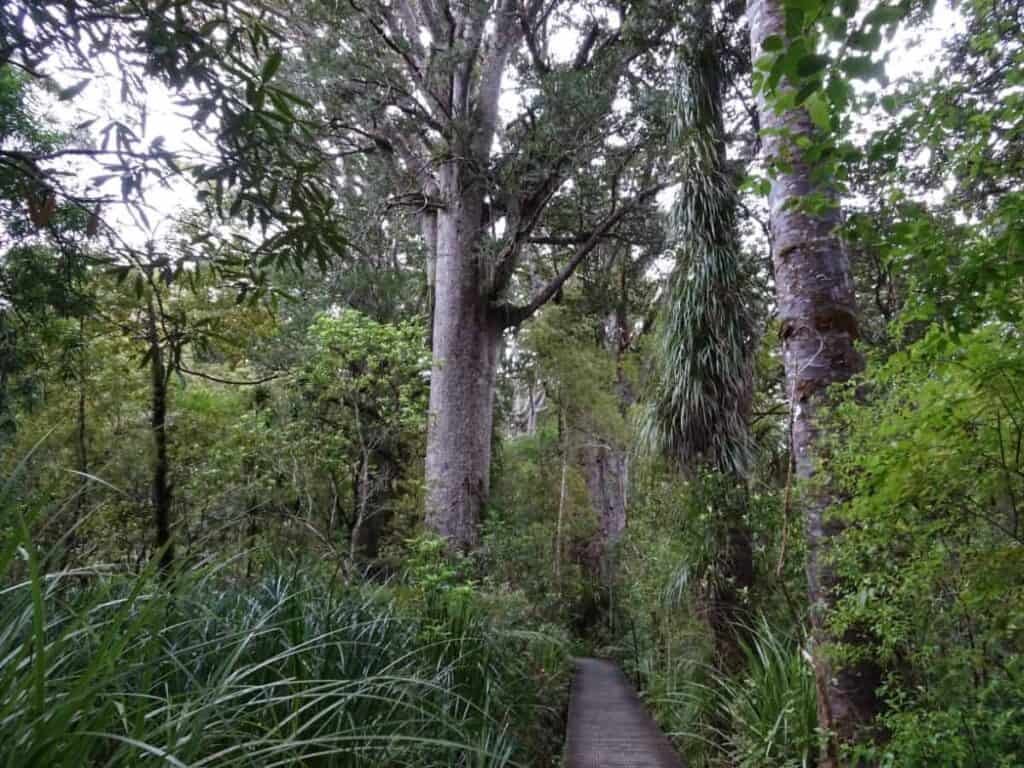
Waipu Cave
There are many caves and paid tours you can go on to see glowworms. This cave was free to visit, and besides being a beautiful cave with delicate formations, it has a fantastic view of glowworms if you go further in. Amazing!

Rotorua
Rotorua is one of the strangest towns I’ve ever been. The town is on thermally active zone. On the corners of the streets you’ll see hot vents, as common as if it was a tree in the ground.
Wai-O-Tapu is an amazing thermal park with incredible pools and formations with stunning colors. We really enjoyed the park. It was a really close tie though with the mud pools just outside Wai-O-Tapu thermal park. The park requires a fee to enter, but the Mud Pools just outside can be viewed for free.
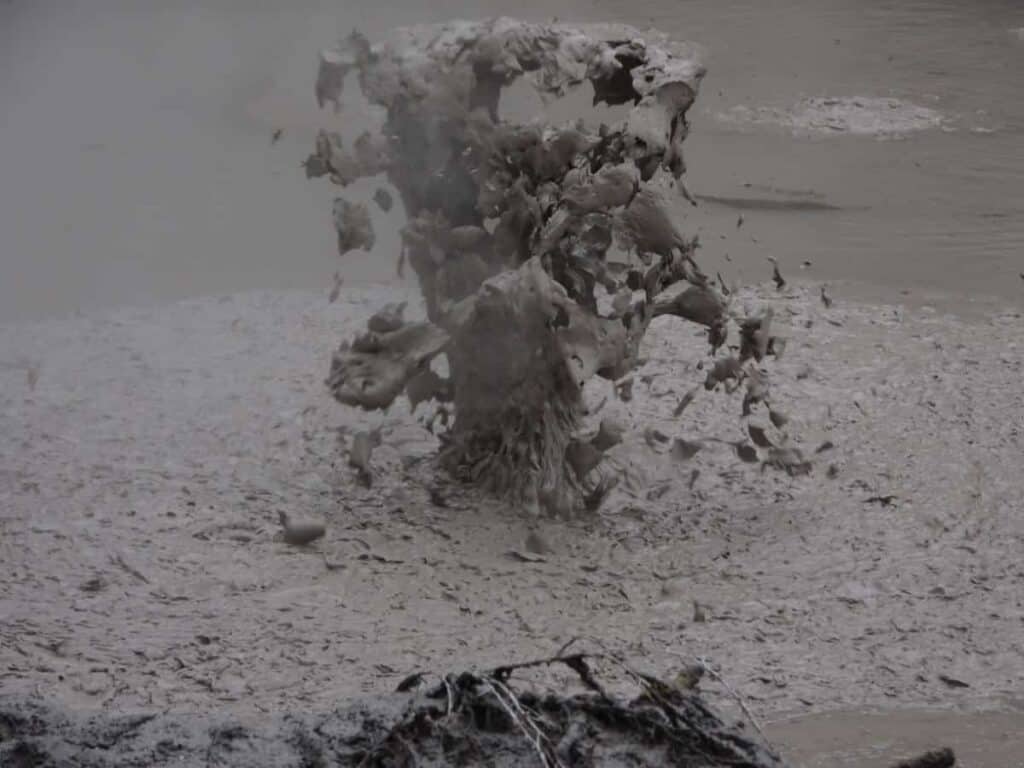
We spent about an hour watching mud sploop, plop, and plitter, not to mention bubble and boil. So fun!
Huka Falls
I’d never seen water the color of toothpaste before, but Huka Falls delivered on that curiousity. Not only is the color so vibrantly, almost shockingly, blue, but the water thunders past, frothing, falling, and roiling.
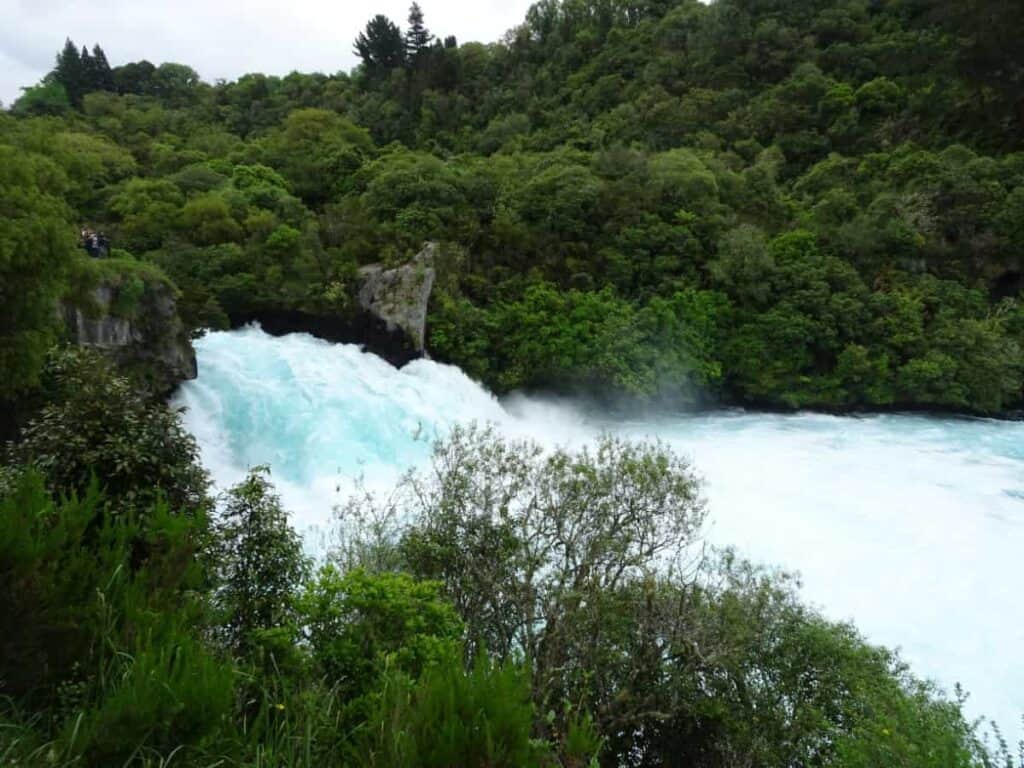
There’s really too many other places to go into detail. We loved car camping on the North Island because we got to see so much, and explore pockets of nature we wouldn’t have been able to, otherwise.
14. Don’t Miss My Favorite NZ South Island Destinations
Castle Hill
Remember that final battle scene in The Lion, The Witch, and The Wardrobe? Castle Hill is the location where it was filmed. This place is amazing to just run around, explore, jump and climb on the rocks, and enjoy the beautiful, rugged South Island view.
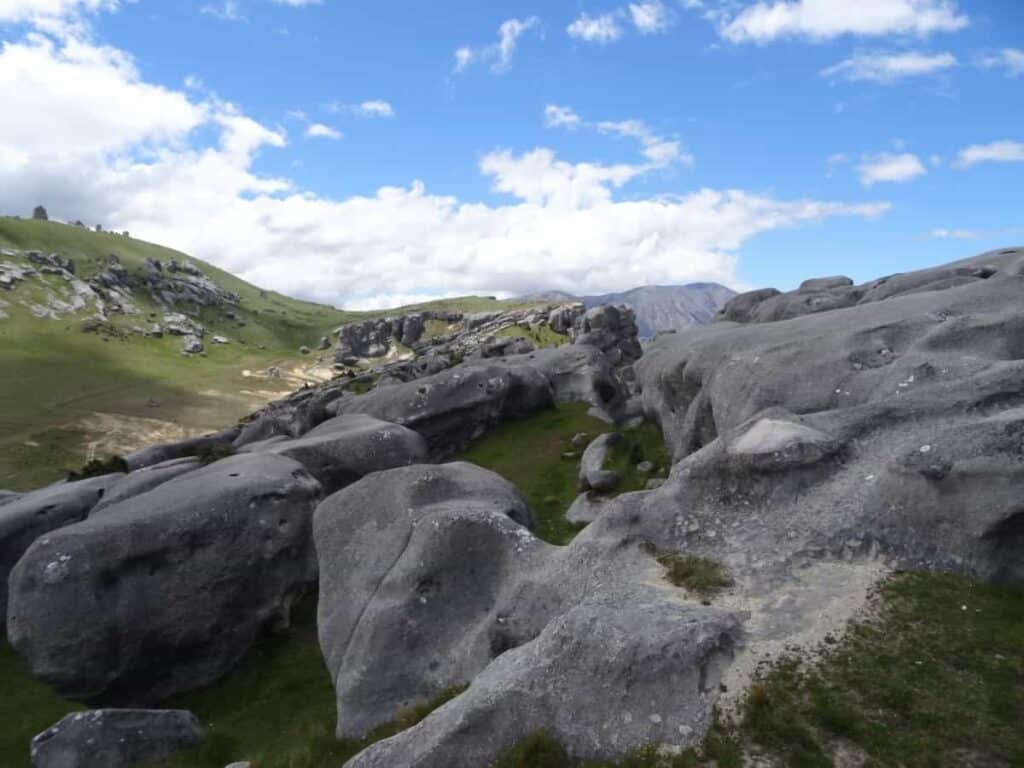
Milford Track
One of the most beautiful treks of my life. I was continuously blown away by the trees, the soil, the earth, and how untouched everything felt. The South Island Fjordland is something not to miss, with some of my favorite waterfalls.
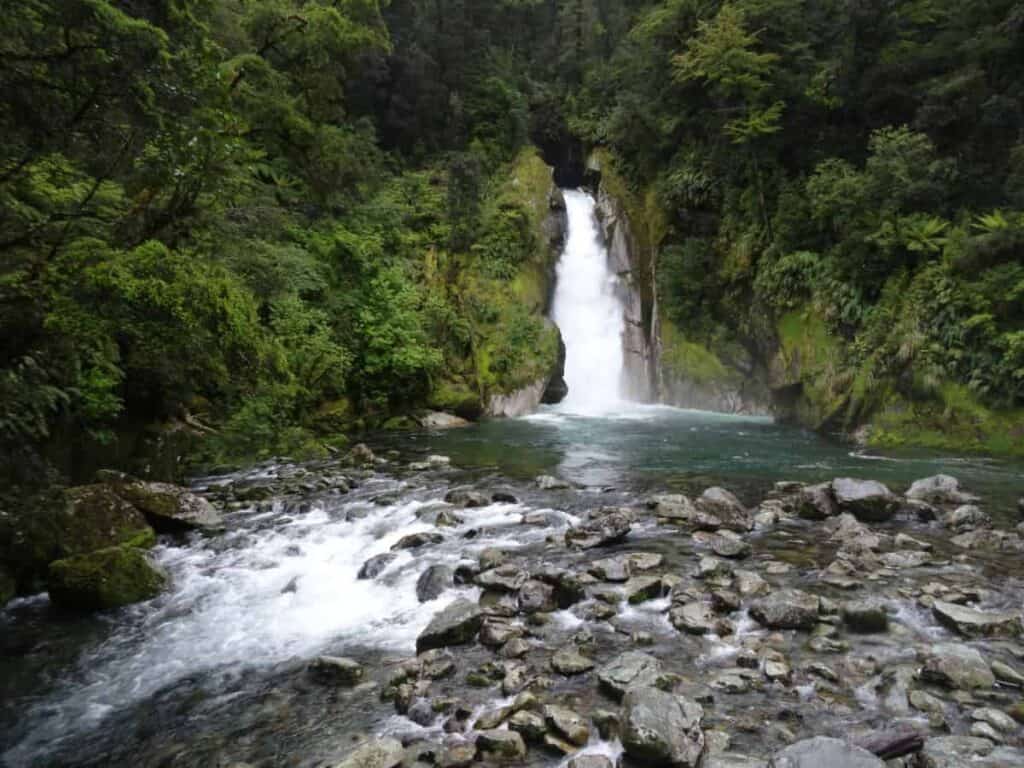
The Catlins
The Catlins are on the Southeastern edge of the island and are so interesting because of the inevitable lonely feeling you get when you’re on the edge of the habitable world as we know it. The Catlins are subjected to constant high winds, which is evidenced by the trees constantly bent over, molded by the wind.
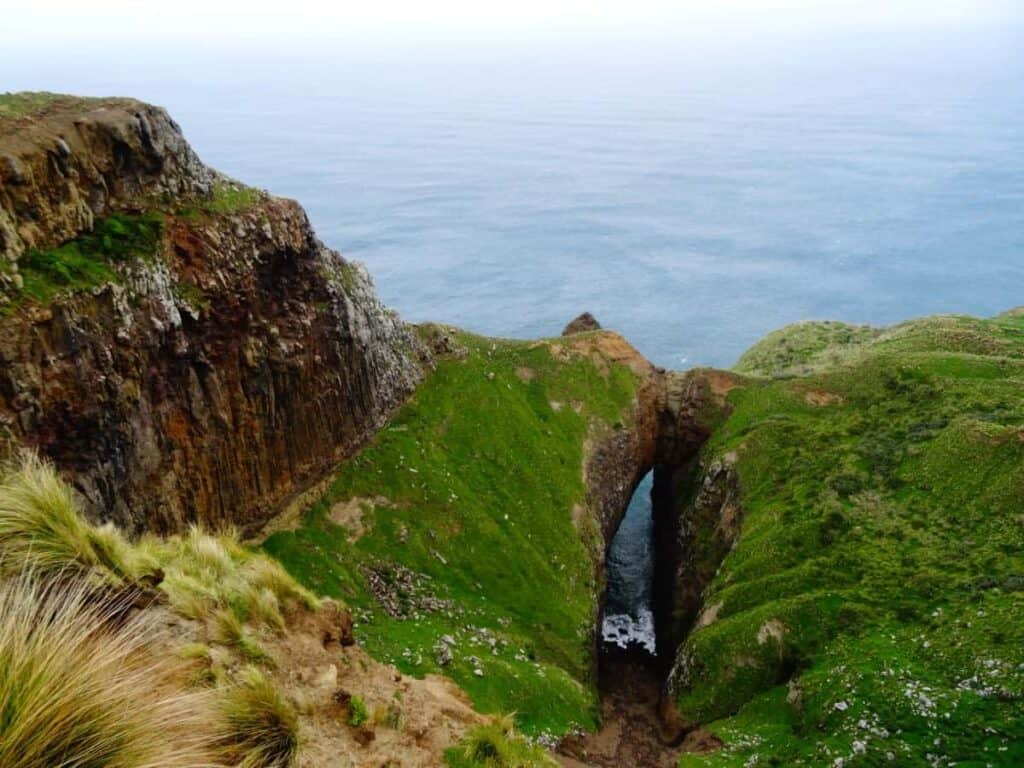
There’s something so strange about looking southward across the ocean, knowing there’s nothing else but a few islands between you and Antarctica.
Moeraki Boulders
These strange, spherical boulders on the east coast of the South Island are a trip. They are at little out of the way from everything, but definitely worth a visit–you’ll never forget them.

Hopefully I’ll get to do a post that I can share some of the other amazing destinations. Car camping on the South Island was one of my favorite experiences of my life. There’s SO much to see. I really recommend checking out the guidebook section of this post, as it really helps to plan out your car camping trip.
15. Don’t Try and See Both Sides of the Ditch (NZ and Australia) in One Trip
The ocean between Australia and New Zealand (around 4000 km) is affectionately called “The Ditch.” Many people who travel to New Zealand also visit Fiji, Australia in the same trip.
Plane tickets are expensive– it makes sense to try and see as much as possible in one trip. However, from my experience where I got to spend 3 weeks on the South Island, and 2 weeks on the North Island, I learned there’s so much depth to New Zealand, and so many places to explore.
I wouldn’t have enjoyed it as much if I had to rush off to the most popular destinations. My favorite part was exploring, and staying in fisherman campgrounds, where there was no hubbub or a million people taking pictures of the same thing.
Make a trip out of just New Zealand. If you can, you can definitely make a full trip with just one island in one trip.
This is all of course with the assumption that you aren’t going to be down there for a couple months. If you have a couple months, you will definitely have enough time to see everything you want to.
16. Sterilize Your Camping Gear (Including Shoes!) Before Flying
This is a crucial tip! If you are planning on camping in New Zealand, you probably are going to be bringing some of your camping gear. The New Zealand travel authorities make a lot of effort to ensure bio-security.
If you are bringing a tent, or a tarp, or anything else that comes in a lot of contact with the ground, your tent or tarp is likely to be taken and scanned thoroughly for microbes that they don’t want to enter New Zealand. We go camping a lot with our tent, and we were fine–but we gave our tent and tarps a really thorough wash in the bathtub with soap.
The same goes for shoes, especially hiking shoes. Make sure you scrub your shoes and ensure there’s no trace of dirt on them, or else you could lengthen your journey through customs.
Also, any fruit, or vegetables MUST be discarded before going through customs. An apple, or a jar of honey can get you in serious trouble. Don’t risk it–don’t bring it.
17. Eat Fish and Chips With Aioli Sauce
We discovered this staple in our last trip to New Zealand. Every town near the beach served fish and chips with Aioli sauce. I won’t speak to the health of this meal, only that it is delicious and brings fond memories of our journey there.
18. Fill Up On Petrol (Gas) At Every Opportunity
Because you’re car camping, you rely on your vehicle’s gas supply. They call it petrol there, and you’ll notice as you’re driving around from location to location, that petrol stations are sometimes VERY sparse. If you are going across the country-side, make sure to take all the opportunities you can to fill up.
19. Set Your Credit Card Up With a Pin
In New Zealand, if you are planning to pay at the pump (and not all petrol stations support this, by the way), then you will likely need a PIN number on your credit card.
A PIN on your credit card? Is that a thing?
Yes! Actually. Log onto your credit card account through your bank, and there should be an option to set up a PIN for your credit card. If it’s not possible through your browser or mobile app, then you should be able to call and ask for assistance in setting up a PIN.
Setting up a PIN for your credit card will allow you to pay at the pump for many petrol stations. This is especially helpful if your only petrol station option is closed because it’s a weekend.
20. Buy a Vodafone Sim Card (or use Project Fi)
On my first trip to New Zealand, I bought a Vodafone Sim Card and used that to have cell service throughout New Zealand without paying international rates. This worked really well, and I didn’t end up using a lot of minutes at all–it was mostly data.
If you’re on Project Fi (now called Google Fi), then you don’t have to worry! Travelling international doesn’t bring any additional fees and you can have decent service. My wife is on Google Fi, and this is how we did it on our last trip to New Zealand. We had good coverage, and I think the spots we didn’t have coverage were more due to the fact that we were in the country a lot where there isn’t a lot of cell service anyway.
21. Bring Really Good Rain Gear
You will get rained on. This doesn’t have to be a disaster, though. If you are properly dressed, then it’s just a part of the adventure. I absolutely loved my rain jacket. It worked great for me for my last two trips to New Zealand. Check out my recommended rain gear page for more details.
22. Be Prepared For Cold
If you’re visiting in the Spring, or the Fall in New Zealand (from September to December, and March through June, respectively), I’d recommend bringing thermal underwear. New Zealand (especially the South Island), can get very chilly. In fact, one night in the Peel Forest on the South Island, I ended up wearing my fleece and long sleeve shirts to bed because it was around 10 Cº.
For my favorite thermal underwear, see my recommended gear page.
The North Island might have been unseasonably warm during our last visit, but we were pretty comfortable without wearing any jackets.
23. Invest In a Superzoom Camera
A nice camera is a good thing to have. Our smartphones, nowadays, actually take decent photos, but one thing they are all missing is optical zoom. New Zealand is home dozens of unique bird species. You aren’t going to be able to take a good picture of any wildlife with a phone camera, that’s why it helps to have a superzoom.
I have a Sony HX-80 camera, which isn’t the highest picture quality (it is still a point-and-shoot), but it has a 30x optical zoom, which is awesome for taking wildlife photos and helps give you scenery vantage points impossible without a large optical zoom.
Here are a few of my favorite New Zealand zoom photos:
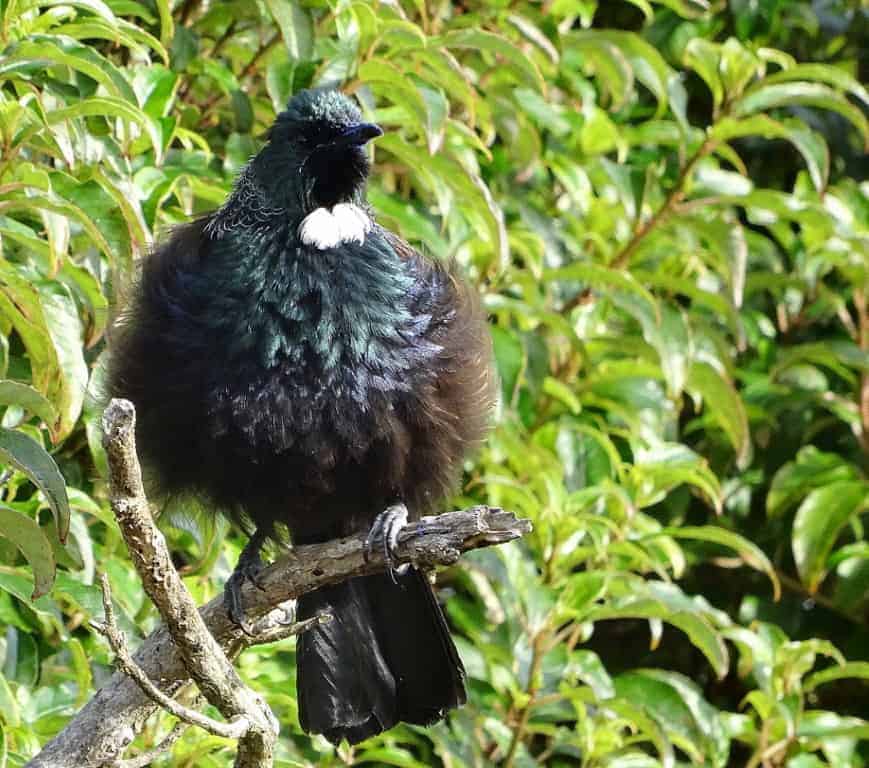
Tui 

Endangered Yellow-Eyed Penguin 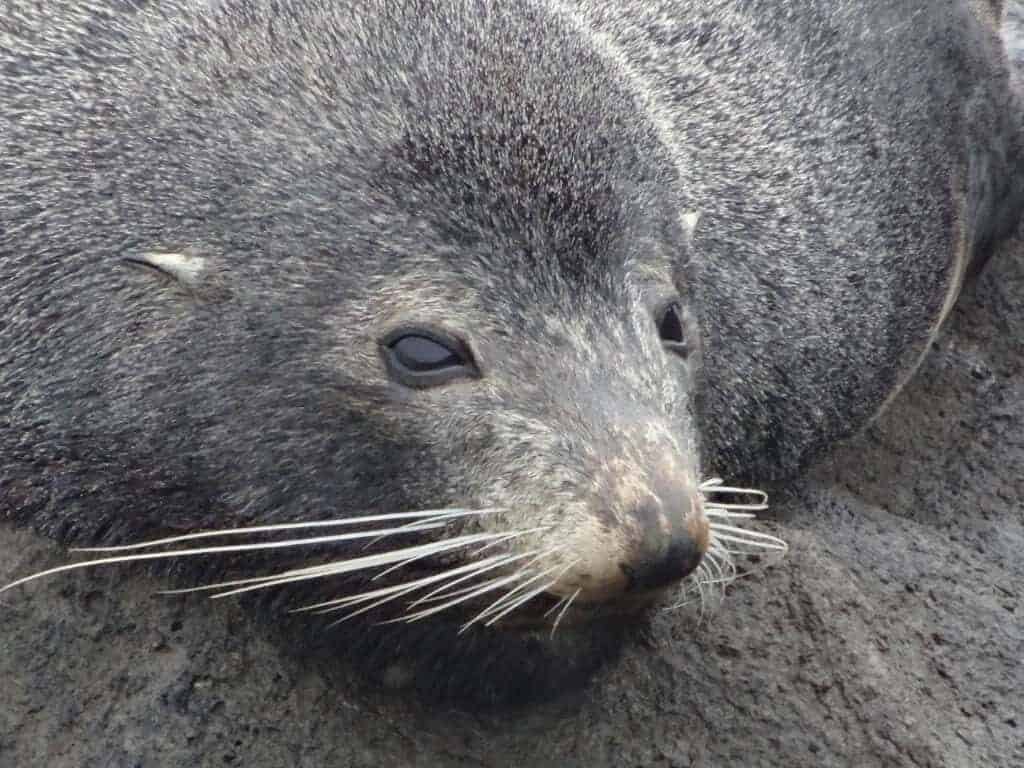
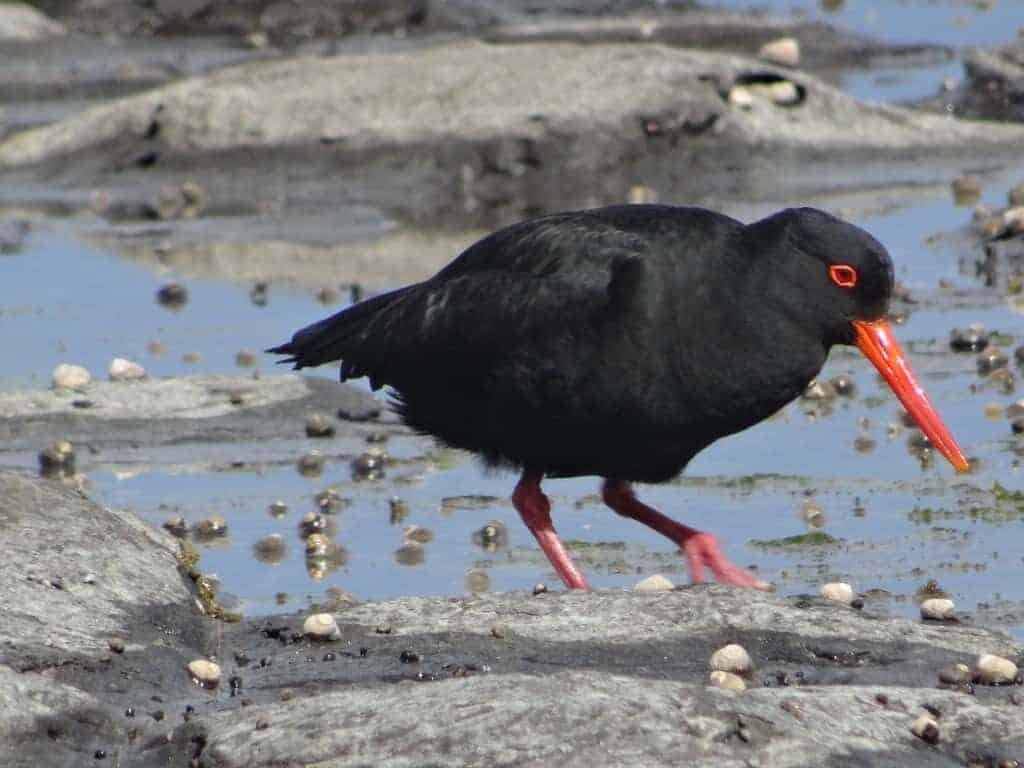
Curios Bay–tōrea bird 
Impossible to Climb Waterfall Wall
24. Bring Your Swimsuit for the Best Dips You’ll Ever Take
You may think that if you’re travelling to New Zealand that you aren’t going to be doing a lot of sunbathing. This may be true depending on where you’re going. However, you haven’t experienced New Zealand until you take a dip in some amazing New Zealand (cold) water.
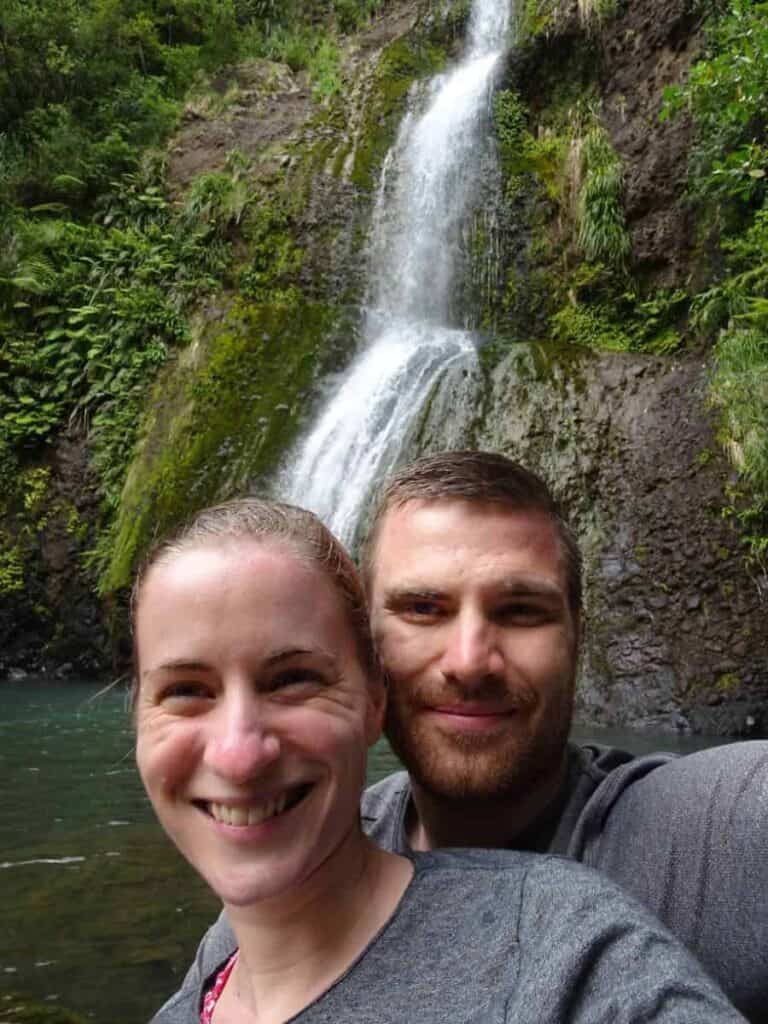
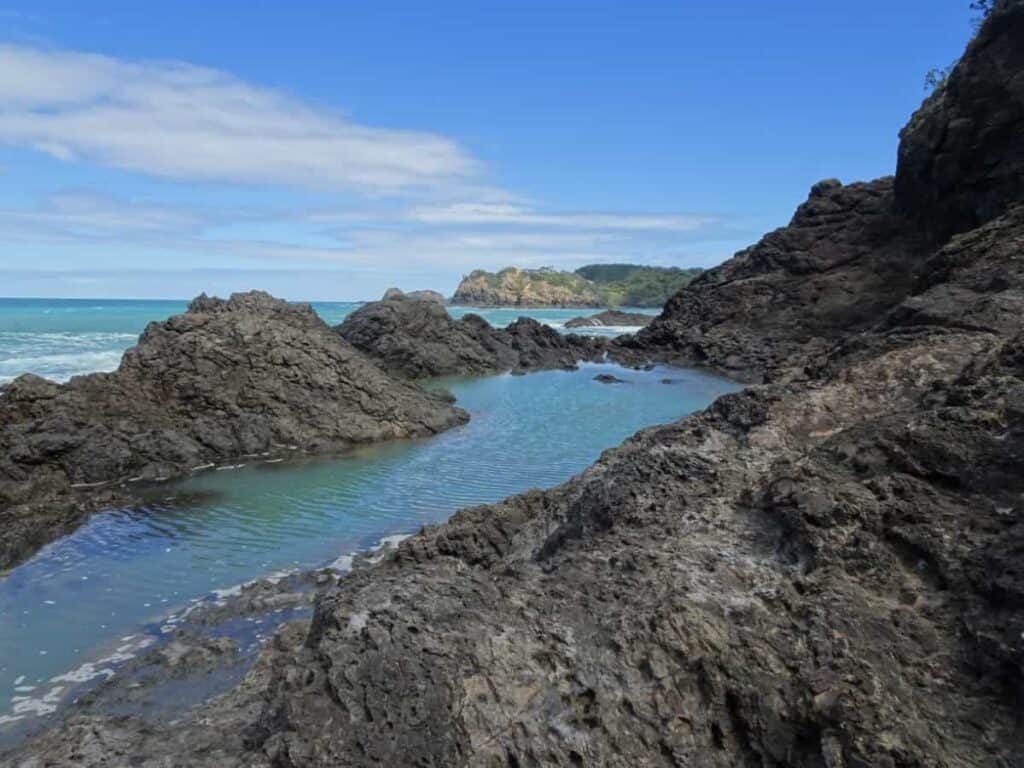
How can you miss out on an opportunity like that!
25. Use the Rankers Camping NZ App
One mobile app that is invaluable is the Rankers Camping NZ App (Android, iOS). This app shows you what campsites are available, some ratings, access information, and their prices. You can find many free campsites this way.
The information on a particular campsite may be out of date especially if it isn’t popular or large, but we had great experiences exploring and finding treats that we would have never found, otherwise.
One example of a not-popular campsite was one that was near Piha bay, near Auckland. We got there and the campsite had a gate that was locked. We had to call the DoC to find someone who had a combination we needed to be able to access the code. We were the only ones there at the campsite, and the toilet was kinda gross. However! We had an amazing view of Piha bay:
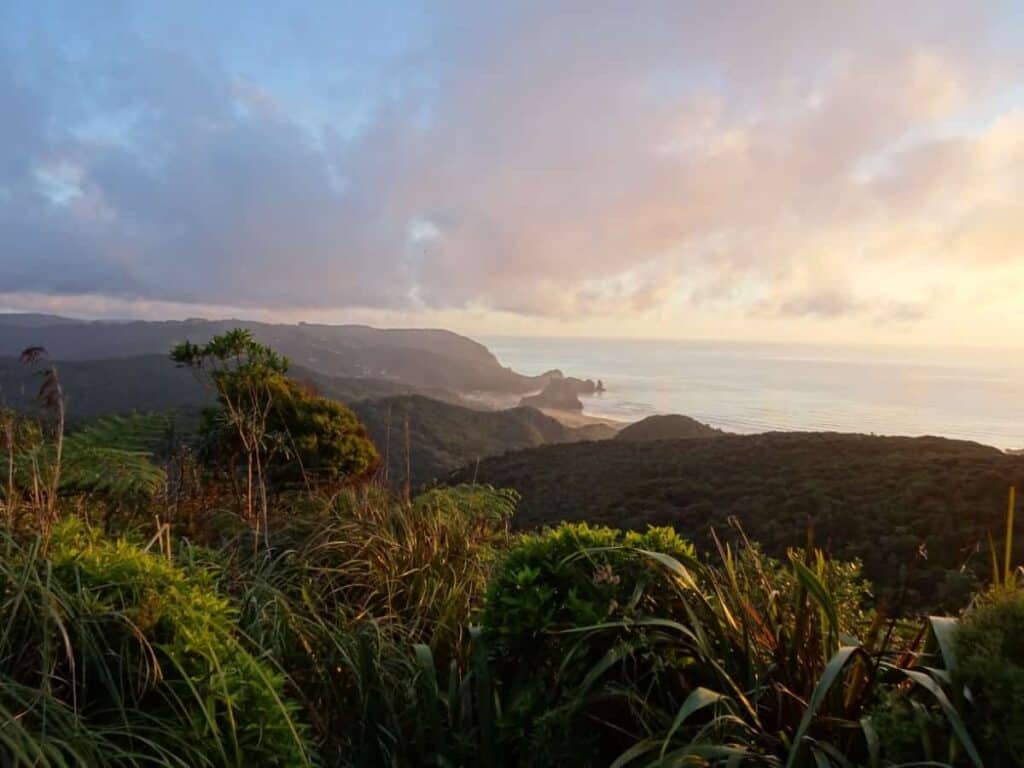
So, make sure and get the Rankers app! It’s awesome! And free!
26. Carry Cash For Campsites
Many of the DoC campsites are unattended, and are visited daily or every other day by a ranger. Sometimes payment options are available online, and others you need some cash to put in a cash box. It’s worth it to get some small bills so you can put the proper amounts in the cash boxes.
27. Don’t Underestimate Sandflies
Sandflies are NO joke. They are all over the South Island, especially. They’re like mosquitoes except I feel like they’re harder to hear. Anyway, make sure you have good bug repellent (the stinky kind). I used this for my two trips and it worked well. It doesn’t smell great, but I feel like it smells better than the spray.
28. Be Careful About Freedom Camping
One term and notion about New Zealand is called Freedom Camping, where you can just pull off the side of the road and camp anywhere. This is a term especially relevant for campervans.
Apparently, the NZ authorities have cracked down on “Freedom Camping” and although still possible in some locations, it’s frowned upon and you could get a police officer knocking on your vehicle window.
A better option is to find a free campsite. They’re sprinkled all over the two islands, and they typically are in a place that you’d want to hang out anyway. The Rankers App I talk about helps immensely with this.
29. Know Your Campsite Type Before You Go
Speaking of finding campsites, there are many different types. Some campsites actually are made for campervans, and not for tent campers. These campsites are typically also restricted to self-sustaining campervans because there are no toilet facilities.
The converse is true, and some campsites restrict large campervans, altogether.
The amenities for campsites vary along with the price. The more expensive campsites typically have some more facilities such as laundry and showers, and a communal kitchen. One of our favorite in-town car camping sites was in a little town called New Plymouth. We had a view of the ocean on a beautiful patch of grass, and the communal kitchen was excellent, and there was even a TV room.
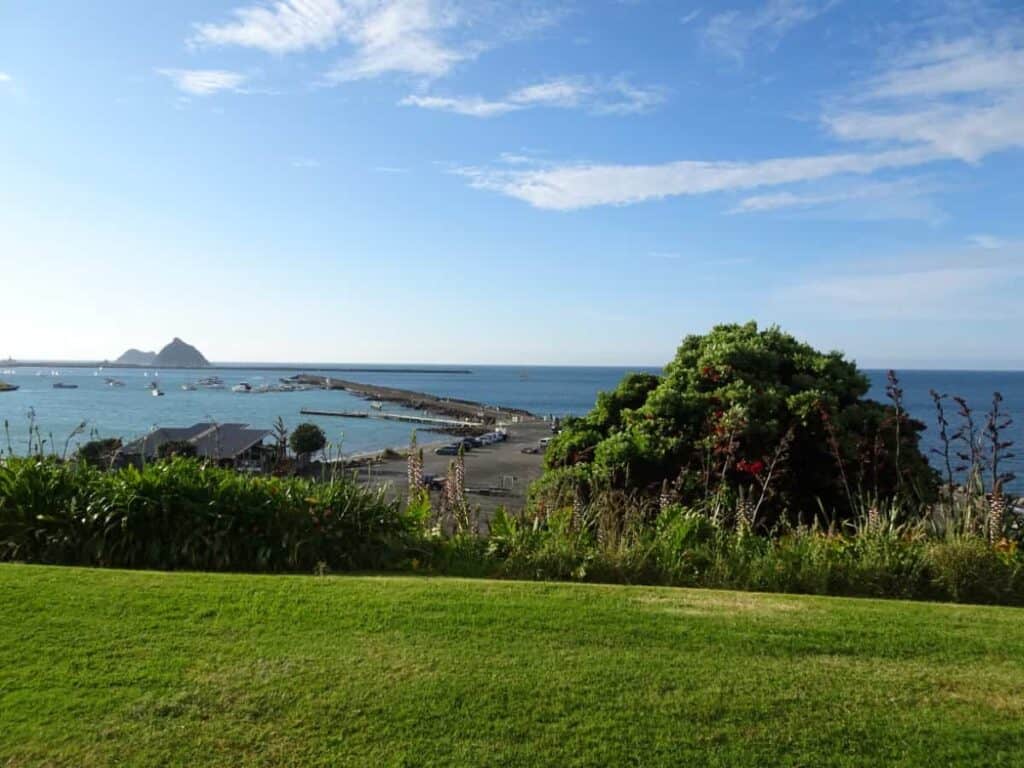
Make sure you do a little research and read reviews for any campsite you want to try to get what you are looking for.
30. Sign Up For AirNZ Deals
One easy way to save a LOT of money is to buy Air NZ tickets when they go on sale. Simply sign up here if you want to be notified of deals.
31. Dates Are Flipped
This is something you probably already know, but I want to make sure you don’t buy tickets for the wrong month accidentally. In America, dates are listed as month, day, year, such as 4/1/2019 while in New Zealand, they are day, month, year. So that example date would be 1/4/2019.
32. Prepare Your Phone To Be Offline
This is a huge tip that will save you a lot of headache. Since you are going to be driving all around the island, you may or may not have a GPS device in your rental car besides your phone. Since internet access is spotty in the country it really helps to download offline maps ahead of time before you head to New Zealand.
For Android phones, here are steps to do that:
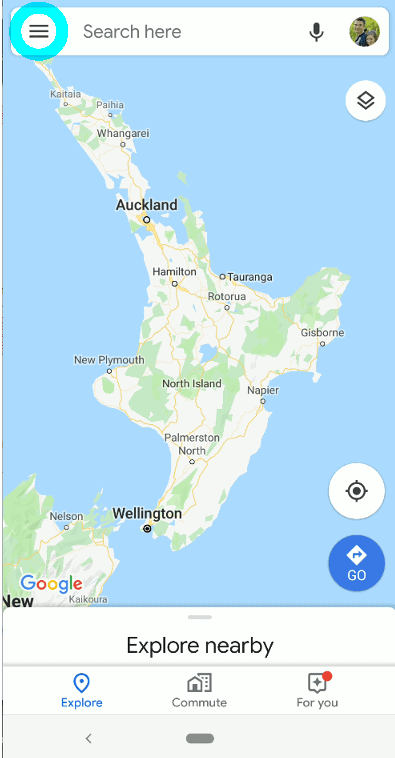
- Open Google Maps and Tap on the Menu
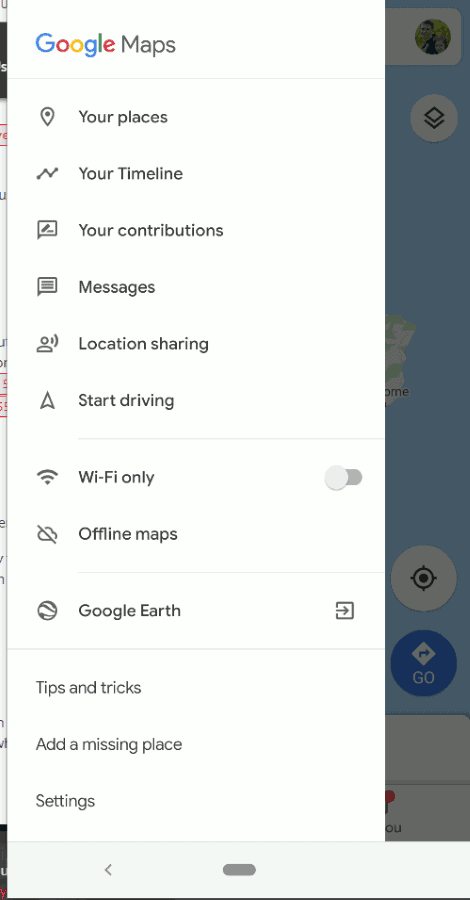
2. Tap on “Offline Maps”
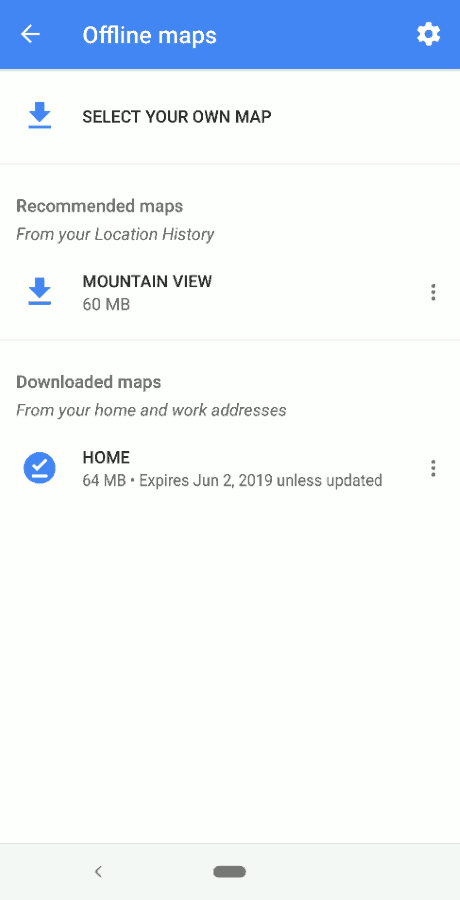
3. Tap on “Select Your Own Map”
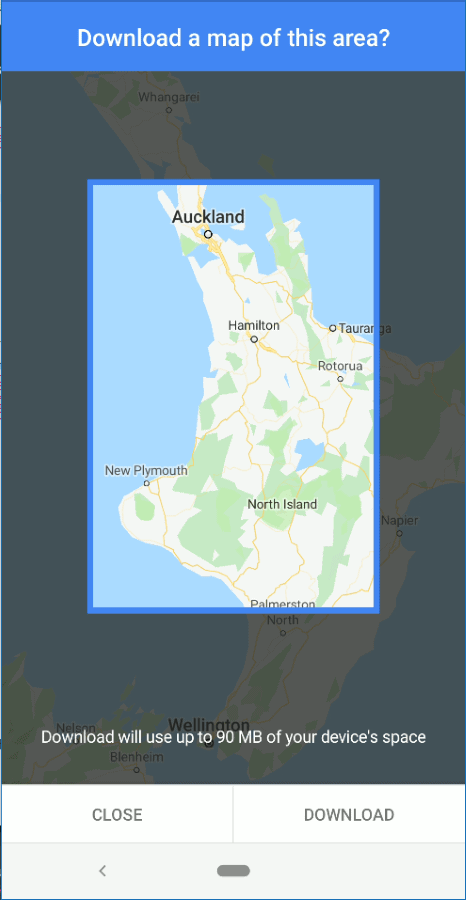
4. Select the area you want to download, and then tap “Download”. You may have to repeat this process because Google only allows you to download small chunks.
5. Your app will then begin downloading the map. You can click on the menu button to the right of the map if you want to rename it.
Download Audiobooks and Music To Your Phone
You can’t operate your phone while driving in New Zealand (and in America actually), but since you’ll be driving for hours, its worth it to download and cache your music and your audiobooks ahead of time so you don’t have to stream them with spotty data connections.

